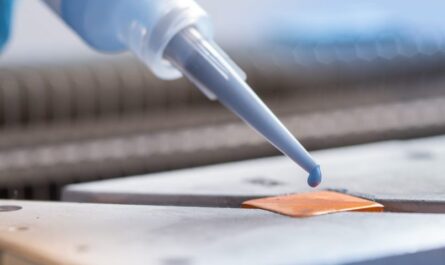Thermoforming is a manufacturing process where a plastic sheet is heated to a pliable forming temperature, formed to a specific shape in a mold, and trimmed to create a usable product. By using thermoforming techniques, recyclable plastic materials can be transformed into useful everyday items. This versatile process allows for mass production of goods in a cost effective manner.
History of Thermoforming
While thermoforming techniques date back to the early 20th century, it was not until after World War II that developments in plastic manufacturing enabled widespread commercial use of the process. Early thermoforming focused on producing food packaging like blister packs from sheets of polystyrene or polyvinyl chloride (PVC). Advances in plastic resin engineering yielded new materials suitable for thermoforming like polyethylene terephthalate (PET) in the 1960s. Thermoforming truly took off as a mainstream manufacturing process during this post-war era as consumer product demand grew.
Major Plastics Used in Thermoforming
Polystyrene (PS) – A hard, clear plastic commonly used for food packaging and protective packaging. PSsheet retains its shape well during thermoforming.
Polyethylene Terephthalate (PET) – A tough, clear plastic known for its resilience. Commonly used for packaging beverages and foods. PET sheet can be thermoformed into deep draws.
Polypropylene (PP) – A flexible plastic capable of being thermoformed into complicated shapes. Often used for industrial and consumer parts where impact resistance is important.
Polyvinyl Chloride (PVC) – A rigid plastic offering good printability and clarity. Used for durable applications like wall panels or removable car interior trim. PVC requires plasticizers for flexibility.
High Impact Polystyrene (HIPS) – Similar to regular PS but with improved flexibility and impact strength. Used for toys, protective casings, and medical device housings.
Applications of Thermoformed Plastics
Food Packaging – Thermoformed plastic clamshell containers, blister packs, and cups/lids allow packaged food to be stacked, shipped, and displayed efficiently while preventing contamination. Major grocery chains rely on mass produced thermoformed plastic food packaging.
Medical Devices – Components for medical instruments, diagnostic equipment housings, and even surgical trays/basins are commonly thermoformed from biocompatible plastics like PP and rigid PVC. Precision forming allows complex parts.
Consumer Durables – Furniture, electronics casings, small appliances, automotive interior/exterior trim panels, and recreational equipment leverage thermoforming to produce high volumes of durable plastic components and enclosures.
Construction Materials – Moisture resistant wall panels, skylights, windows, and doors are thermoformed from materials such as acrylic, PETG and fiberglass reinforced plastics for commercial and industrial buildings.
Advantages of Thermoforming
Cost Effectiveness – Thermoforming plastic sheets into products provides significant material and labor cost savings compared to cast/machined molding processes when high production volumes are required.
Design Flexibility – Almost any two-dimensional geometrical shape can be formed from a plastic sheet using male/female molds, allowing creative and intricate part designs. Undercuts are possible using slush casting.
Material Variety – A wide selection of engineering-grade thermoplastic materials can be thermoformed to suit specific performance requirements like clarity, chemical resistance, temperature tolerance, or impact strength.
Reduced Waste – Scraps from the trimming operation after thermoforming can easily be reground and reprocessed, minimizing plastic waste generation compared to other molding methods.
Variations on Basic Thermoforming
Thermoforming has evolved over the decades to include specialized derivations of the general process tailored for certain applications:
Vacuum Forming – Application of vacuum pressure while the heated sheet contacts the mold draws it tightly against all mold surfaces ensuring extremely accurate replicating of fine detail. Mainly used for small, intricate parts.
Pressure Forming – Air pressure is applied from the back of the plastic sheet after heating to push it firmly into the mold without need for a sealed chamber. Enables larger/thicker sheet forming.
Match Molding – Two pre-formed plastic parts that mate with each other are made in sequential steps to create a customized clamshell container or shell/base assembly with precision fitting of parts.
Thermoform/Fill/Seal – Pre-formed plastic trays or containers are filled with product then sealed with a lidding web to produce complete sealed packages in a continuous operation direct from sheet stock.
Rotary/Continuous – A long plastic sheet passes through a series of heated molds or forming stations on a rotating wheel allowing continuous high-speed conversion into a variety of individual parts with short cycle times.
The Future of Thermoforming
Advancements in plastic resin engineering continue to expand the performance range possible for thermoformed parts. Bio-based plastics, recycled content plastics, improved clarity grades, and specialty polymers open up new application opportunities. As sustainability and recycling become greater priorities, thermoforming’s scalability, material versatility, and minimized waste generation position it well for growth. New hybrid manufacturing technologies are also being developed that integrate elements of 3D printing and thermoforming to achieve multi-material complex geometries. Overall, thermoforming plastic sheets into useful products through molding remains a dominant manufacturing process that shows no signs of becoming obsolete. With ongoing refinements, thermoforming will likely be transforming materials into solutions for many decades to come.
*Note:
1.Source: Coherent Market Insights, Public sources, Desk research
2.We have leveraged AI tools to mine information and compile it



